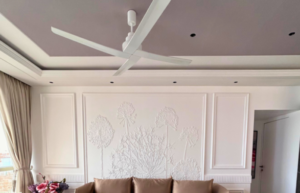When choosing a metal finish for your home appliances, automotive parts, or interior design, durability usually plays the deciding role. Among today’s most favored choices, satin metal coating and glossy finishes are among the front runners. However, when the question is longevity, which of them actually dominates the other?
What Constitutes Satin Metal Coating?

Satin metal coating is the ideal compromise between matte and glossy finishes. Described by its low-lustre, smooth appearance, this finish provides:
– A low sheen that minimises glare
– Superior fingerprint and scratch resistance
– A modern, high-end look
Typical uses are
– Luxury kitchen appliances (refrigerators, ovens, range hoods)
– Automotive interior trim and exterior emblems
– High-end electronics (laptops, smartphones, tablets)
– Architectural hardware and furniture trim
What Constitutes a Glossy Metal Finish?
Gloss finishes produce a mirror-like, exceptionally reflective surface that:
– Deepens and strengthens colours
– Produces a high-end, luxurious look
– Needs fastidious upkeep to maintain its sheen
Common applications are:
– High-end appliances (built-in refrigerators, wine coolers)
– Jewellery and decorative accessories
– Showroom automotive bodies
– High-end retail display and fittings
Durability Smackdown: Key Differences Compared
- Scratch Resistance and Surface Wear
Satin Metal Coating:
– The textured surface cleverly conceals small scratches
– Usually includes extra protective clear coats
– Lasts longer in high-traffic conditions in terms of appearance
Glossy Finish:
– Exhibits all small scratches and swirl marks
– Needs repeated polishing to look impeccable
– Slightly more prone to visible wear over the long haul
Industry statistics indicate satin finishes last 30-40% longer in terms of appearance during scratch tests.
- Corrosion and Environmental Resistance
Satin Metal Benefits:
– Improved UV resistance (less color fade)
– Less sensitive to humidity and temperature shifts
– Conceals oxidation more when it happens
Glossy Finish Weaknesses:
– Reveals corrosion and oxidation at once
– Needs more regular protective treatments
– UV light can speed finish deterioration
- Maintenance Needs
Satin Metal:
– Regular dusting every week is usually enough
– Fingerprints and smudges are less evident
– No special cleaners needed
Glossy Finish:
– Wiping every day is usually needed
– Reveals all fingerprints and dust specks
– Needs specialised polishing compounds
Maintenance time studies indicate satin finishes require 3- 5x as much maintenance as glossy.
How Painting Drive can Help you with Satin service
When to Use Each Finish
Use Satin Metal Coating When




Consider Glossy Finish When:




After testing everything , the proof is clear: satin metal coating lasts far longer than glossy finishes in almost all uses.
Major Takeaways:
- Satin finishes look good 2-3 times longer
- They need a fraction of the upkeep
- Overall ownership costs are much less
- They function better in heavy-use conditions
Whereas glossy finishes do have their applications in luxury displays and low-traffic use, for long-term durability and everyday practical use, satin metal coating is the clear winner.
Here are some tips to take care of your metal finish
For Satin Metal:
– Clean with microfiber cloths
– Do not use abrasive cleaners
– Apply protective wax every year for outdoor items
For Glossy Finishes:
– Clean with specialist metal polishes
– Clean regularly to avoid buildup
– Refinish professionally every 2-3 years
Ultimate Recommendation
For most residential and commercial uses where durability is of concern, satin metal coating is the perfect mix of durability, looks, and low maintenance. Though glossy surfaces make beautiful initial impressions, they just can’t compare to long-term performance under actual conditions when using satin metal.
.




